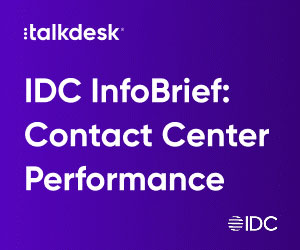Holacracy is the latest trend shaping customer service. Not heard of it before? Read on to find out more.
Holacracy sounds like fresh air, enlightenment and salvation to many of the issues companies are facing now.
Fundamentally, it is a way of structuring an organisation which replicates the way people interact in a city.
Flat structure, no managers, focus on roles rather than titles, local decision-making and distributed authority. No departments, but role-driven circles, no senseless meetings, but meetings on purpose, routine is completely distinguished from important projects.
It definitely strongly affects a company’s structure by hierarchy and process optimisation, it helps with employee empowerment and an evolving culture of trust, it raises levels of accountability and proactivity.
It helps the organisation in question, but its focus is hugely inward.
A year ago, Steve Denning of Forbes was questioning the impact this might have on the customer.
Specifically, Mr Denning asked: “Where is the customer in Holacracy?”. In Holacracy, the only explicit feedback mechanisms… are vertical. There are no explicit feedback mechanisms from the customer, i.e. the people for whom the work is being done… In a world in which the balance of power in the marketplace has shifted from the seller to the customer, this issue is critical. When so much time and effort is spent on the micro-details of the internal decision-making mechanisms and absolutely no attention given to any external feedback mechanisms, one could easily get the idea that the internal mechanisms are supremely important while the customer is irrelevant. Unless and until this ‘gap’ is rectified, Holacracy risks being a distraction from the central organisational challenge of our times, namely, how to make organisations more able to add value to customers through continuous transformational innovation.
If we look closer, what he asked for is easily introduced into Holacracy; it becomes beneficial if you want to optimise the whole customer experience, get leaner and eliminate waste.
You move from one-channel agents to omni-channel ones, to save money, time and be there for your customers everywhere, you introduce Voice of the Customer (VOC) services to hear your clients, you focus less on agents’ numbers and more on the purpose and essence of customer service translated into everyday work.
Ultimately, it comes down to the fact that, regardless of Holacracy, you can still do all that for your customer service.
So what’s missing? What current structure of contact centres could benefit from Holacracy? And where IS the customer here?
So let’s walk through it.
No teams, but Circles
First, no teams, but Circles. And every Circle needs a purpose that’s aligned with the company’s overall strategy. So the big change is that CS agents are not divided by language, shift, product or skill set but by their focus on a particular part of current CS strategy. This results in employees’ closer involvement in the company’s processes and alignment with its mission, values, strategies and purpose.
Then accountabilities are distributed within a Circle, meaning the concrete actions that need to take place for that purpose to be achieved.
Once a comprehensive list has been compiled, the accountabilities need to be clustered together into Roles.
Compared to current common structures in customer service this would be totally different: your current front-line agents would eventually land in a circle with VOC agents, with your current project manager, with your current SLA coordinator, and all together they would work on, say, introducing 24/7 social media support and increasing its presence in the company’s overall customer service structure.
It’s fast, it’s holistic, it’s effective. And the customer is in the centre of it.
Speaking of current team manager and supervisor positions, these are dissected into the Roles, distributed along with all other work and assigned to the person who is the best fit to perform that work.
Now that the Roles are clear, you can move on to determining the actions that the Circle will work on. Start with the projects, follow up with recurring actions.
In Holacracy customer service reality, it would mean that all are in project management and all are in performance management and all are in front-line CS. Eventually agents’ work is truly becoming a means of implementing the company’s business strategy.
That’s performance, so what about metrics?
Holacracy metrics
The David Allen Company’s CEO Mike Williams shares: “Holacracy drives you into the DNA of what makes up a metric”. Employees got incredibly connected with each and every metric and its place in the whole company universe, as more metrics are placed into a context of customer/company interaction and constantly re-sensed by Circles through recurring and project tasks.
To provide this connection, Holacracy is used for general technological and process optimisation, for strategy updates and locally as a neat outlook on performance on daily purpose.
Margaret Ryan, a Holacracy partner at yWonderWorks, says: “In Holacracy, those Metrics that Matter are refined over time through an iterative process. One measure of a successful metric is the answer to the question, does this number change the way I behave regularly? If the answer is no, then the numbers are simply interesting data, versus vital metrics to review.”
She continues, “Micromanaging starts to disappear from the system and fulfilment increases as Partners start to trust the process, take 100% responsibility for their Roles, and focus on their Circle’s metrics instead of their old way of doing business”.
So again returning to a need for purpose, elimination of waste and senselessness, evolving connection and context in performance, we come to a system of meaningful metrics which matter for your business strategy, which are live, accessible, and, most importantly, actionable.
How are people remunerated, then?
This isn’t specified in the Holacracy constitution so it’s down to the organisation to decide. Suffice to say, the more Roles you energise effectively, the more you will be rewarded.
As self-management, trust and clarity of vision is spread through the company, everybody gets to understand what is asked from him/her and how their performance is measured and connected to eventual success. To put it more simply, nobody tells you how to do the job, because you define it and you do it.
This leads us to a very important customer service practice of coaching and mentoring.
Shelley Kirkpatrick of Management Concepts revisits this brilliantly: “Holacracy takes the “supervisor as coach” idea and pushes it to the extreme. In a self-managed organization, different people might coach others on certain aspects of the work, depending on the individual’s goals, skills, and expertise. So, coaching is not a permanent role so much as a set of behaviours that anyone in the organization can use”.
Usually in contact centres, coaching is very targeted on reaching needed KPIs and only sometimes can focus on behaviour and attitudes. In a Holacracy contact centre everything that matters for the company is coachable at every level if it suits the purposes of the Circles and strategy in general. Accurate meaningfully calibrated coaching brings adaptive results to the customer’s benefit, the evolving quality of the organisation and the talents of its employees.
Looking through all these points and comparing them with what’s already happening in CS leader companies, one can easily see that we’re all almost there but not quite yet.
Holacracy will definitely add fire into your processes, policies, decisions and people; it will definitely speed them up and make your operations brighter, lighter and more humane. Calling for the true sense of business, everyday work and talents can’t lead you in a wrong direction.

Kseniia Aksenova
But going all-in like Zappos is definitely essential as this is a practice which changes approaches and mindsets and deeply affects outcomes.
It’s a great tool to get your company to become more customer-centric as well, although if your initial strategy is missing your customers, Holacracy will be of no big help.
In the end, it all starts from you as a business, as a contact centre, as a CS agent.
With thanks to Kseniia Aksenova, a new writer for Call Centre Helper
What have been your experiences of Holacracy?
Share your experiences in an email to Call Centre Helper
Author: Megan Jones
Published On: 10th Jun 2015 - Last modified: 26th Sep 2017
Read more about - Call Centre Management, Customer Service, Editor's Picks, Employee Engagement, Metrics, Training









































Great piece Kseniia. Here’s something of what I learned and which I shared on our blog a few weeks ago
http://www.budd.uk.com/self-managing-teams-5-things-i-learned/
As a Support manager for a software startup, this almost defines our structure where culture and the customer are at the center. I just did not know it had a defined name.
Team leads are coaches plus autonomy and team policing amongst staff is encouraged.
Nice article.
“the more Roles you energise effectively, the more you will be rewarded”
“To put it more simply, nobody tells you how to do the job, because you define it and you do it.”
I look forward to seeing how that is introduced into a contract of employment.